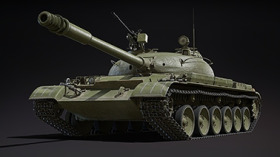
- For PC
- For MAC
- For Linux
- OS: Windows 7 SP1/8/10 (64 bit)
- Processor: Dual-Core 2.2 GHz
- Memory: 4GB
- Video Card: DirectX 10.1 level video card: AMD Radeon 77XX / NVIDIA GeForce GTX 660. The minimum supported resolution for the game is 720p.
- Network: Broadband Internet connection
- Hard Drive: 17 GB
- OS: Windows 10/11 (64 bit)
- Processor: Intel Core i5 or Ryzen 5 3600 and better
- Memory: 16 GB and more
- Video Card: DirectX 11 level video card or higher and drivers: Nvidia GeForce 1060 and higher, Radeon RX 570 and higher
- Network: Broadband Internet connection
- Hard Drive: 95 GB
- OS: Mac OS Big Sur 11.0 or newer
- Processor: Core i5, minimum 2.2GHz (Intel Xeon is not supported)
- Memory: 6 GB
- Video Card: Intel Iris Pro 5200 (Mac), or analog from AMD/Nvidia for Mac. Minimum supported resolution for the game is 720p with Metal support.
- Network: Broadband Internet connection
- Hard Drive: 17 GB
- OS: Mac OS Big Sur 11.0 or newer
- Processor: Core i7 (Intel Xeon is not supported)
- Memory: 8 GB
- Video Card: Radeon Vega II or higher with Metal support.
- Network: Broadband Internet connection
- Hard Drive: 95 GB
- OS: Most modern 64bit Linux distributions
- Processor: Dual-Core 2.4 GHz
- Memory: 4 GB
- Video Card: NVIDIA 660 with latest proprietary drivers (not older than 6 months) / similar AMD with latest proprietary drivers (not older than 6 months; the minimum supported resolution for the game is 720p) with Vulkan support.
- Network: Broadband Internet connection
- Hard Drive: 17 GB
- OS: Ubuntu 20.04 64bit
- Processor: Intel Core i7
- Memory: 16 GB
- Video Card: NVIDIA 1060 with latest proprietary drivers (not older than 6 months) / similar AMD (Radeon RX 570) with latest proprietary drivers (not older than 6 months) with Vulkan support.
- Network: Broadband Internet connection
- Hard Drive: 95 GB
In the skies above the Stalingrad on September 13th 1942, 11-kill Luftwaffe ace Unteroffizier Erwin Meier of JG53 dived his Me109G onto the tail of a Yakolev 1. Pursuing the Soviet fighter, his cannon shells tore through the Yak as the pilot frantically tried to escape the Luftwaffe ace. Seemingly from nowhere, shells smashed into Meier’s Messerschmitt, forcing him to break off the pursuit and desperately look around him for his attacker. Another Yak 1 had latched onto his tail and now matched his every move as he tried to shake off his attacker. But Meier had met his match. Another burst struck home and flames licked over the canopy from the Messerschmitt’s shattered engine. Realising his only chances of survival were to face the Red Army on the ground below, Meier leapt from his burning fighter.
Soviet soldiers were waiting for him as he drifted down in his parachute. Still shocked, Meier demanded to meet the pilot who had bested him. Knowing that fighters operated from an airstrip to the west, not far from the route to where prisoners were to be deposited, Meier’s Russian guards obliged his request. Arriving at the small airstrip, Erwin Meier was shocked and disgusted at the cruel practical joke when a short, pretty blonde girl barely out of her teens and dressed scruffily in a sergeant’s uniform was presented to him. It was only when, in passable German, that the girl described their aerial encounter in detail that he realized he was face to face with the pilot who had bested him.
War Thunder presents Ace of the Month special from 18:00 GMT September 30th (11:00 PDT September 30th) to 18:00 GMT October 1st (11:00 PDT October 1st) : +30% experience on Yak-1b aircraft. 30% special discount for the purchase price of MiG-3, Yak-1b, Lagg-3, Lagg-3-35, Lagg-3-66.
Born in Moscow on August 18th 1921, Lydia Litvyak grew up with her parents and younger brother in a cramped, two room apartment a mile from the Kremlin. Her father worked for the Commissariat of Transportation and her mother added to the family’s meager earnings with part time hours in a store. Like many children her age, Litvyak became a ‘Little Octoberist’ scout at the age of 7 before advancing on to become a Young Pioneer at the age of 10. Litvyak grew up fiercely patriotic. In 1933, coincidentally on Litvyak’s 12th birthday, General Alksnis of the VVS (Soviet Army Air Force) declared the first Soviet Air Fleet Day and Litvyak visited the impressive displays at Gorky Park. At the age of 14, even though too young to fly, she was given ‘semi-official permission’ to attend ground school classes at Osoaviakhim flying club. After passing her ground school exams, Ulyanov, one of the club instructors, would break the rules to take her flying on occasion.
Litvyak flew her first solo flight aged only 15, in a Polikarpov U2 biplane. Despite her mother’s objections, she continued to fly and to excel at her lessons. Her passion for aviation grew as she was further inspired by a new generation of female aviators who were conducting record breaking flights in Russia; first and foremost was Marina Raskova, who featured heavily in Litvyak’s scrap book of newspaper clippings of her heroines. Remembered as a charismatic and confident teenager by her peers, Litvyak was popular with boys and fond of dancing. A fellow female aviation student described her as good at everything she tried, and that at some point or other all of the boys at her flying school fell in love with her. However, Litvyak’s carefree teenaged days would soon be over.
Litvyak was an instructor and talented pilot with a flair for aerobatics by 1941. In June of that year, Germany invaded the Soviet Union. On November 7th, with German forces less than 100 miles from Moscow, Litvyak was one of thousands who were stirred into a patriotic fervor by Stalin’s speech in Red Square. Inspired by the thousands of women who had already gone to war and desperate to clear her family name after her father’s demise in the purges, Litvyak looked for a chance to go to war.
Marina Raskova, her idol, had already given a speech in September which Litvyak had attended. Raskova now personally persuaded Stalin that women should be given the right to fly and fight for their country. On October 8th 1941 orders were given for the creation of the 122nd Aviation Group under the command of Raskova. This would be made up of the 586th Fighter Aviation Regiment, the 587th Bomber Aviation Regiment and the 588th Night Bomber Aviation Regiment. Raskova and her aides interviewed hundreds of young women for the posts. Litvyak was selected. The successful applicants were issued mens’ army uniforms and taken by train to Engels for training. Upon arriving, the new recruits were given men’s regulation haircuts – however, often compared to movie star Valentina Polovikova Serova, Litvyak’s vanity would not allow it and she was the only recruit to refuse. Finally, after much persuasion, she agreed to have her head shaved with the other female recruits. Having already marked herself as a potential problem, Litvyak compounded the issue by cutting the fur tops from her flying boots so that she could make a fur collar for her flying suit, which she considered to be more fashionable. After being arrested and placed in solitary confinement with a needle and thread, Litvyak returned her flying gear to issue standard.
As her hair grew out she returned to bleaching it blonde, a habit which continued even on the front line, where she reputedly traded supplies with a field hospital to get hydrogen peroxide to mix with hot water from the radiator of her fighter.
Trained on same U-2/Po-2 biplane as she herself had instructed on, Litvyak established herself as one of the programme’s best pilots and was selected for the 586th Fighter Aviation Regiment along with her friend Katya Budanova. Promoted to Sergeants, Litvyak and Budanova formed part of the new 586th IAP, equipped with 18 Yakolev Yak-1 fighters. The Yak-1 was considered to be one of the best Soviet fighters at the time and its inclusion was testament to Raskova’s networking skills, persuasion and determination. Litvyak first flew the Yak 1 in late January 1942 and was stationed on the left bank of the Volga. Fond of flowers, Litvyak had a postcard of yellow roses from her mother tucked into left hand side of instrument panel of her new fighter.
The 586th IAP was declared operational on April 16th. However, instead of being sent to front line the regiment was employed in Air Defense duties near Saratov. Bored, away from the action, the pilots of the 586th would often meet male pilots of other local units for dances. Litvyak again proved to be the most popular, by now confident and well used to constant attention. It did little to alleviate the boredom and frustration with being left out of the war. With Raskova’s continued influence, eight female pilots were selected as replacements in male fighter squadrons at Stalingrad, where at this stage the Luftwaffe outnumbered the VVS by four to one. Litvyak and Budanova were amongst those selected as replacements for the 437th IAP, flying to Stalingrad in September 1942 and causing some ‘Yak-envy’ on arrival at the LaGG-3 equipped unit. On September 13th Litvyak became the first ever woman to shoot down an aircraft in aerial combat when she destroyed Erwin Meier’s 109 after it had latched onto the tail of fellow female pilot Raisa Beliaeva. She shot down a second 109 the next day.
On September 27th she shot down a Ju88 and a 109. In October 1942, Litvyak and Budanova were handpicked to join the elite 9th Guards Fighter Aviation Regiment. As General Paulus was in retreat at Stalingrad, the VVS now finally began to outnumber the Luftwaffe in the skies above. Litvyak was involved in intense aerial operations for next 3 months, but whilst Budanova shot down two 110s on Dec 10th Litvyak did not claim any confirmed kills, possibly due to a majority of sorties being flown as a wingman.
1943 began with tragedy for Litvyak and Budanova when news reached them that Marina Raskova had been killed when her Pe-2 crashed in bad weather. Litvyak and Budanova transferred to 296th IAP at Kotelnokovo, where both were finally greeted with respect as combat veterans by their new CO, Colonel Nikolai Baranov. Baranov was a veteran flier who was respected and admired by the men and women under his command, who nicknamed him ‘father’ or ‘daddy’ due to his paternal manner. As the VVP transitioned from 3 to 4 aircraft flights, Baranov, Litvyak and Budanova often flew together along with fellow ace Alexai Solomatin. On February 11th Litvyak shot down a Ju 87 and shared an FW 190.
One week later both Litvyak and Budanova were commissioned as Junior Lieutenants. Now a flight leader, Litvyak’s individuality re-asserted itself as she was often seen with colourful flying scarves she had made out of parachute silk. She is also reputed to have painted lilies on the nose of her fighter, but there is no photographic proof of this. This would later be misidentified by the Western media, giving rise to her nickname of ‘The White Rose of Stalingrad’. During the summer, Litvyak also picked flowers and would taunt the men in her squadron by decorating their aircraft with petals. She also regularly carried out low level aerobatics over her airfield after returning from sorties.

Now aces, Litvyak and Budanova were both awarded the Order of the Red Star on February 23rd. 296th IAP also given ‘Guards’ designation. Both pilots would go on to be awarded the Order of the Red Banner and two Orders of the Patriotic War. On March 22nd Litvyak shot down a Ju 88 before being engaged by two 109s. Although severely wounded in the leg, she shot down one of the German fighters and claimed the second as a probable kill. After surgery she spent April in Moscow, recovering from her wounds with her mother and little brother. However, following the surgery she was left with a permanent limp. Whilst in Moscow she was stopped one day by an army officer and reprimanded for wearing a flower in her uniform cap. When he read her papers and realized who she was and why she was in Moscow he spluttered an apology and demanded to escort her on her travels. She now found herself mentioned in newspapers, taking second place only to the aerial exploits of Alexandr Pokryshkin.
In May 1943 Litvyak returned to the front line on her own insistence, well before making a full recovery. On her return she was promoted to Senior Lieutenant and shot down a 109G on the 5th. She landed on to refuel and rearm but when Baranov, her CO, saw her condition he ordered her to shut down the aircraft and rest. The next day, Baranov was hit in combat and nursed a burning Yak 1 back to the airfield. The whole Regiment, Litvyak included, watched as he jumped from the stricken aircraft, only to have his parachute burn and collapse. His death, combined with the loss of Raskova, had a huge effect on Litvyak. She shot down another 109G the next day.
Alexai Solomatin, another of her close comrades, was decorated as a Hero of the Soviet Union; he had all but told Litvyak of being in love with her. He too was killed after suffering an engine failure on a training flight at the end of the month. Only after his death did Litvyak write to her mother and say she realized she too was in love with him. Devastated by the loss of her childhood idol and friend, a Regimental commander she regarded as a father and now the man she loved, Litvyak’s days of brash confidence and girlish vanity were now long gone. A seasoned veteran with a burning hatred for her foes, she lived only to fly and to kill.
On June 13th Litvyak was made Commanding Officer of the 73rd GvIAP’s 3rd squadron. Three days later, whilst leading her squadron into battle she shot down a Ju88 and a 109G, as well as outmaneuvering and damaging a second 109 flown by 53 kill ace Hans Grunburg, who barely escaped from the duel. Litvyak too was hit, suffering injuries to her leg and shoulder. Only days later, after shooting down a 109, fellow ace Katya Budanova was killed after sustaining injuries following crash landing her damaged fighter. Friends and colleagues noticed the once playful girl harden even further, to the point of ruthless obsession.
On August 1st, after shooting down another 109 confirmed and possibly a second, Litvyak was engaged by two 109s on her fourth sortie of the day. Fatigued, still nursing her wounds, the last confirmed sighting of Litvyak was by one of her wingmen through a gap in the clouds as she frantically fought with the pair of 109s. Historians have narrowed down the search of the pilot who finally shot down the White Rose of Stalingrad to one of two men; one of those German pilots was killed moments later when the Yak he had just shot down turned around and rammed him.
There are many theories behind the fate of Lydia Litvyak. Reports of a pilot matching her description being marched away from a crash site by German troops, of her being forced to speak on German radio, and of a colleague recognizing her across a crowded German POW camp all materialized after the war. An online article was published in 2006 supporting these claims, telling of a female Soviet fighter pilot, twice wounded and now happily married with three children, who gave a television interview in Switzerland after being captured and never able to return home fearing the reprisals of surrender.
In the summer of 1979, an old Yak 1 was discovered with its dead pilot near Dmytrivka. The remains were identified as those of Litvyak. Now officially Killed in Action and not missing, she was eligible for the Soviet Union’s highest award for valour, the successor of which was finally awarded by Boris Yeltsin in 1993.
However, there are still those who believe the remains were not those of Litvyak and the reports were falsified so as to be able to lobby for her medal and acknowledgement as a national hero. The truth will probably never be known. Most sources credit Litvyak with 12 German aircraft destroyed, plus several shared. About ¾ of these were single seat fighters considered to be superior in performance to the Yak 1. Lydia Litvyak is now remembered as the first female fighter ace of all time and the top scoring female fighter pilot; however, there is no doubt that she stood out as one of the Soviet Union’s greatest aerial heroes irrespective of gender. The fact that she achieved so much in such a short life whilst facing fire from the enemy and discrimination from elements of her own forces is further testament to her skill and tenacity.
Discuss on the Official Forum.
 |
About the author:Mark Barber, War Thunder Historical ConsultantMark Barber is a pilot in the British Royal Navy's Fleet Air Arm. His first book was published by Osprey Publishing in 2008; subsequently, he has written several more titles for Osprey and has also published articles for several magazines, including the UK's top selling aviation magazine 'FlyPast'. His main areas of interest are British Naval Aviation in the First and Second World Wars and RAF Fighter Command in the Second World War. He currently works with Gaijin as a Historical Consultant, helping to run the Historical Section of the War Thunder forums and heading up the Ace of the Month series. |





